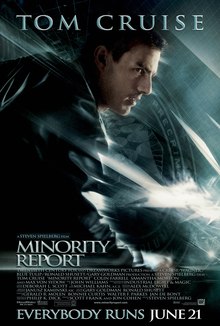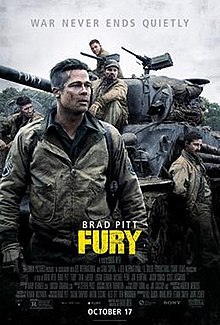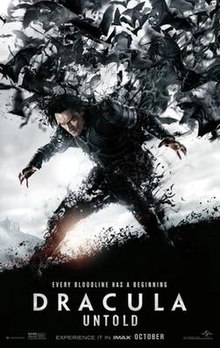
Released: June 21st, 2002
Rated: PG-13
Studio: 20th Century Fox
Starring: Tom Cruise, Colin Farrell, Samantha
Morton, Max von Sydow
Directed by: Steven Spielberg
Written by: Scott Frank, Jon Cohen
Personal Bias Alert: likes exploration of ideas, weirded out by Neal McDonough
5.5 of 10
I’m
pretty sure I saw Minority Report when
it was released. I remember the screens
sliding around, expanding, overlapping, moving in a way entirely unknown to me
at the time. I also remember Tom Cruise
being Tom Cruise-y, although I could be getting that confused with all the
other times he’s played that character.
Problem is, I didn’t remember anything else; the story has slid so far
out of my mind that its twists and turns seemed fresh and new to me when I
re-watched it. I’m sure they were in my
brain somewhere, right next to The
Bridges of Madison County and that one episode of Futurama, but I find the movie so utterly forgettable that I can
already feel it sliding out of my head all over again.
Based
on a Philip K. Dick short story, Minority
Report follows John Anderton (Tom Cruise), the leader of a group of cops
who use the predictions generated by three psychic “precog” humans to arrest
murderers before they commit the act.
The legality and accuracy of this is brought into question, and the
department is investigated by a government representative named Danny Witwer
(Colin Farrell). After an unusual
prediction by the precogs, Anderton’s life is thrown into disarray and the
holes in the department are left open for Witwer to see.
A lot
of the appeal of Minority Report
comes from its sleek vision of the future, with just out of reach technology
(some of which we’re already seeing today) and a modern architectural style
that compliments the film’s overexposed lighting. It looks good, but it’s also a world we could
envision ourselves in. That’s a sweet
spot to hit in sci-fi that appeals to hard core and transient fans alike. Except for the cars. Those were just a bit too strange.
At
its heart, Minority Report is an
action film, so it spends a good chunk of its time in long, semi-silly fight
scenes. These are staged all right, but
they’re pretty generic and had a few moments that made me unintentionally
chuckle (listen to those punching sounds in Cruise and Farrell’s fistfight and
try not to laugh). Since Cruise can pull
off action sequences and borderline cheesy lines with the best of them, he’s an
excellent fit for the lead role. You can
never question his commitment to a film.
His wholehearted effort always shines through, so it’s too bad that he’s
left with a one-note character and no arc in this one. He tries, but there’s no saving a character
written this lazily.
There
is an effort to bring some age-old sci-fi dilemmas into the mix, but the film’s
more successful at bringing them up than actually exploring them. I’m hesitant to give the screenwriters much
credit for the ideas themselves, as I’m almost certain they were lifted straight
from the Philip K. Dick short story. Since
they don’t expand on them, the film really does nothing with its ideas,
treating them more as plot points than themes.
The screenwriters then chose to handle them with dull, on-the-nose
dialogue that makes the ideas feel more labored than revelatory and makes this
whole aspect of the film a real let-down.
There
are a couple scenes towards the end that really click, and for a moment I
thought the film was going to recover from its lackluster middle section. The film is directed by Spielberg, after all,
which always gives you reason to hope for an entertaining but substantive
piece. Too often, though, Spielberg
fails to find the right mix, and here the entertainment portion wins out. The ending abandons the momentum it started
to build and goes for a big, silly finish that doesn’t make much sense.
Actually,
most of the film doesn’t make much sense.
The plot holes are pretty big, and when sci-fi writers fail to make
their world plausible, I tend to check out.
That’s what happened with me and Minority
Report. I smelled a manipulative,
soft sci-fi story from the beginning, and that’s pretty much what I got.
Other
Notes (Ridiculous Sci-Fi Version):
Ø My
advanced technology is always thwarted by towels shoved under a door.
Ø How
would the alarms not go off when he scans his old eye?
Ø Aw,
there’s a flush button.
Ø It’s
saggy Tom Cruise!
Other
Notes (Regular Version):
Ø I
found the score a bit too overbearing.
Ø Don’t
name your film after a MacGuffin.
Ø We
interrupt this sci-fi action movie to bring you a Gap ad.







